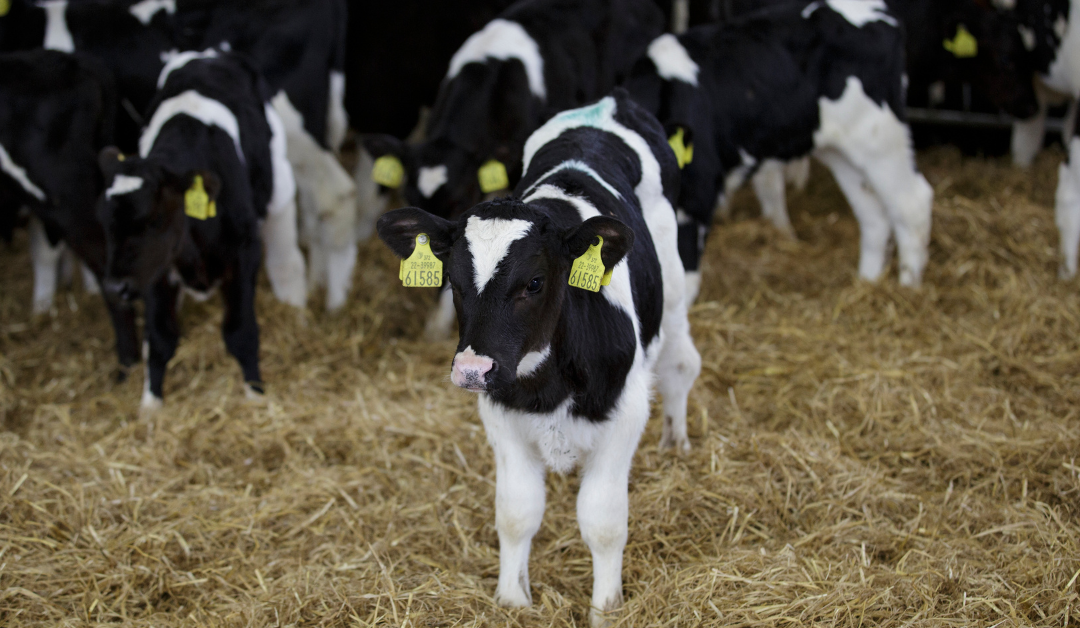The management of calves in the first few weeks of life has a significant impact on their lifetime production, and with replacement heifers, impact their long-term profitability. The average cost of rearing a heifer to 24 months is estimated to be circa €1,553, with a significant percentage of that cost incurred during the start of life/calf-rearing period. However, relative to spend, the first 6 months of life is crucial: in just 7% of its lifetime, the calf will reach 25% of its mature weight – highlighting the importance of ensuring optimal nutrition.
Research has shown that calves reach similar weight gains on milk replacer as they do while being fed on whole milk. However, this is on the basis that the milk replacer is formulated correctly, using high quality dairy ingredients and that feeding instructions are followed. Milk replacer labelling and composition can, at times, be confusing, with large differences in specifications and price available on the market. However, it is important to keep several factors in mind when selecting a milk replacer to fit your system and to avoid any confusion.
Protein Sources
Many questions center around the percentage of protein on the label of a bag of milk replacer, which is important, but more emphasis needs to be placed on the origin of said protein %. As we are trying to replicate the role of whole milk, as much of the protein as possible should be coming from a milk/dairy-based source, relative to vegetable/plant-based sources. In a young calf’s first few weeks of life, dairy sources are much more digestible and result in greater performance. Plant-based protein sources are cheaper alternative sources of protein and where inclusions are high, similar levels of performance to whole milk should not be expected in early life. Increased fibre content can often be indicative of plant derivatives being used in milk replacers.
Manufacturing Processes
Another less considered factor in overall digestibility of a milk replacer is the quality of the raw dairy materials used. Low heat-treated milk powders will have natural immunoglobin content available in the product and have no protein denaturisation, relative to high heat-treated skim or whey. Low heat-treated milk products are often more expensive on the market, but again lead to increased performance/digestibility.

Fat Sources
Fat percentage and sources of fat in milk replacer are also important, as fat is the main source of energy to the calf. Coconut and palm fat are the more common sources, with great digestibility and energy respectively for young calves.
Feeding Rates
The percentage of solids in whole milk is typically 12.5% (approx), hence it is also the most common feeding rate of milk replacer on the farm. This equates to 125g of powder in 875ml water to make up 1L of feed. Fed at 6L, a calf will be consuming 750g of milk replacer daily.
Accelerated feed programmes are often used on farm where higher Average Daily Gain (ADG) is being targeted with replacement heifers – this would include feeding a higher concentration of milk replacer (5% milk solids) or increased volumes. Once-a-day feeding schedules are becoming increasingly popular. However, once a day feeding should only ever be considered once calves are greater than one month old.
Weaning should be gradual and only ever considered once a calf is consuming more than 1.5kg/hd/day in group pen scenarios. At this point, a calf is independently consuming enough dry matter from straw and concentrate to allow for a stress-free weaning period.
Learn more about our Vitalac Calf Milk Replacer Range here.
For more information, contact your local Agritech Sales Advisor.


